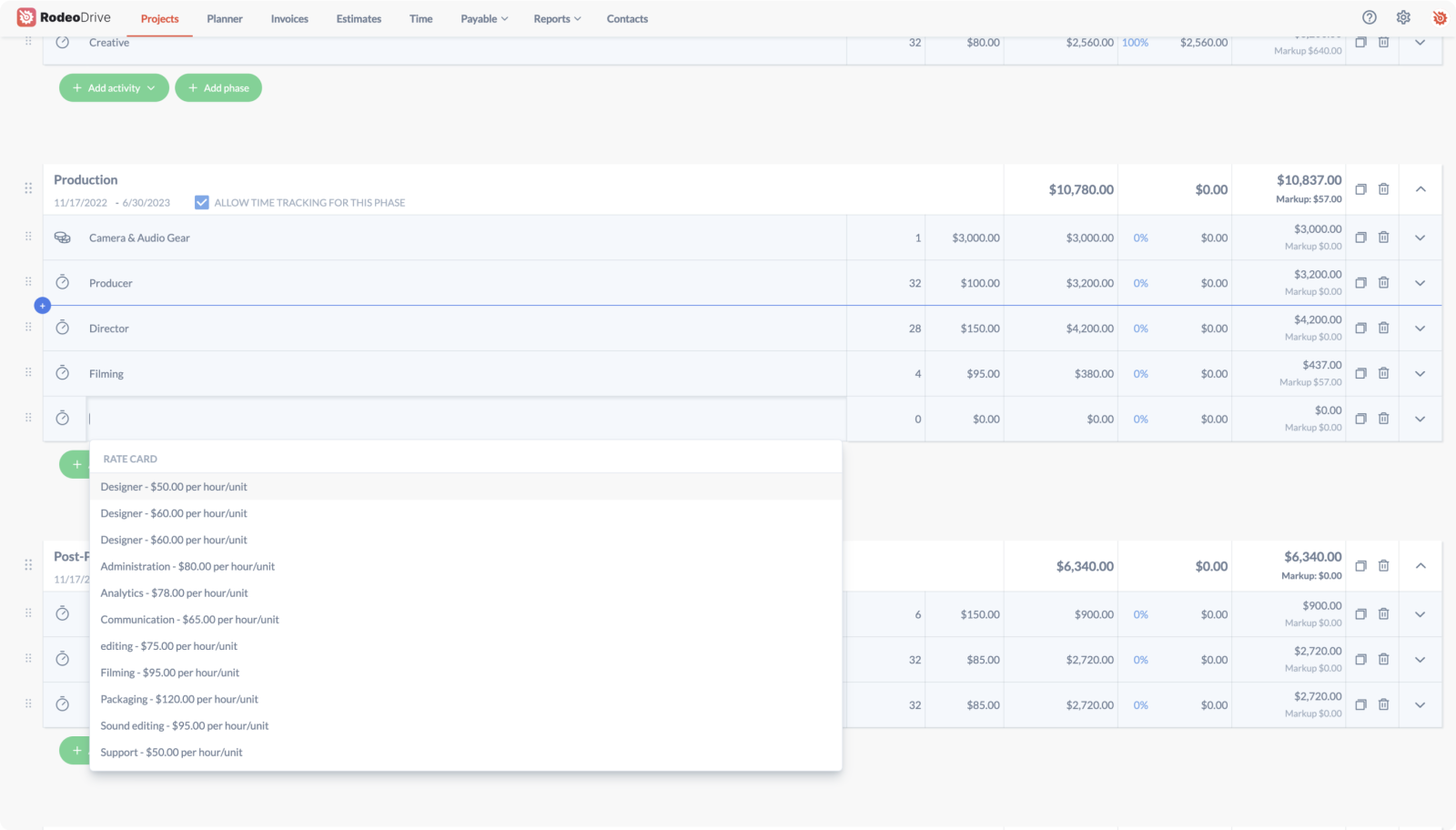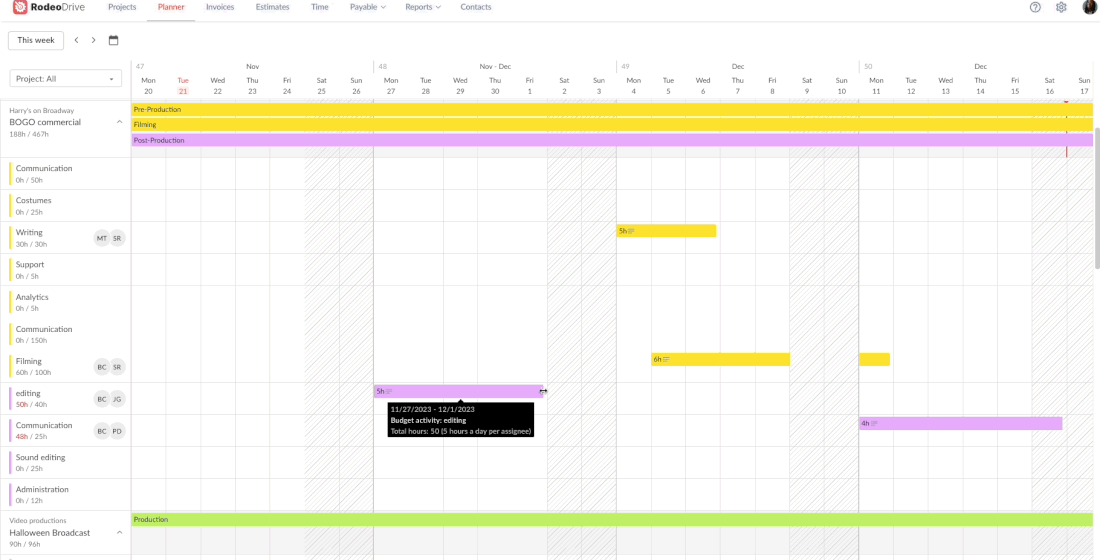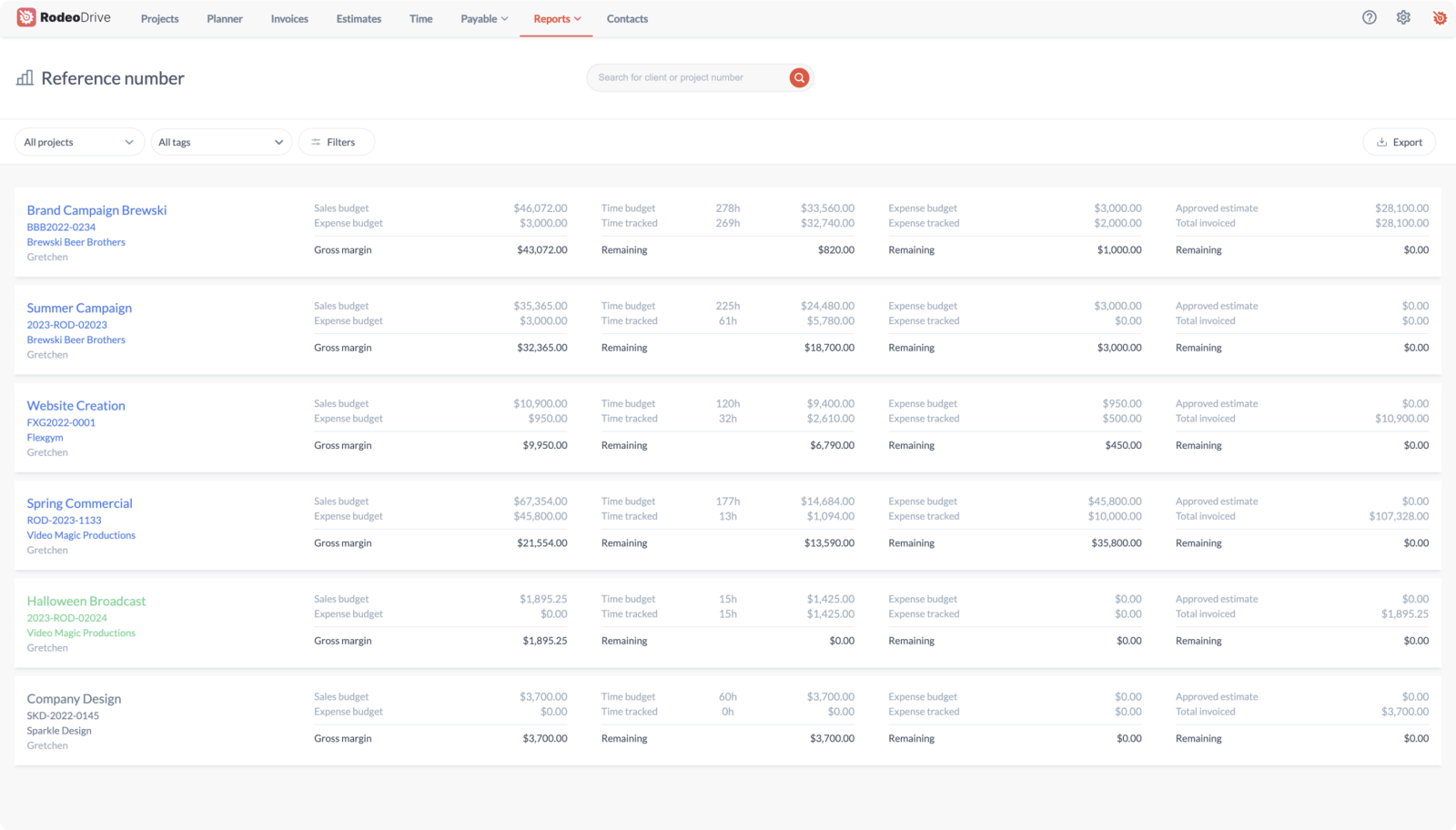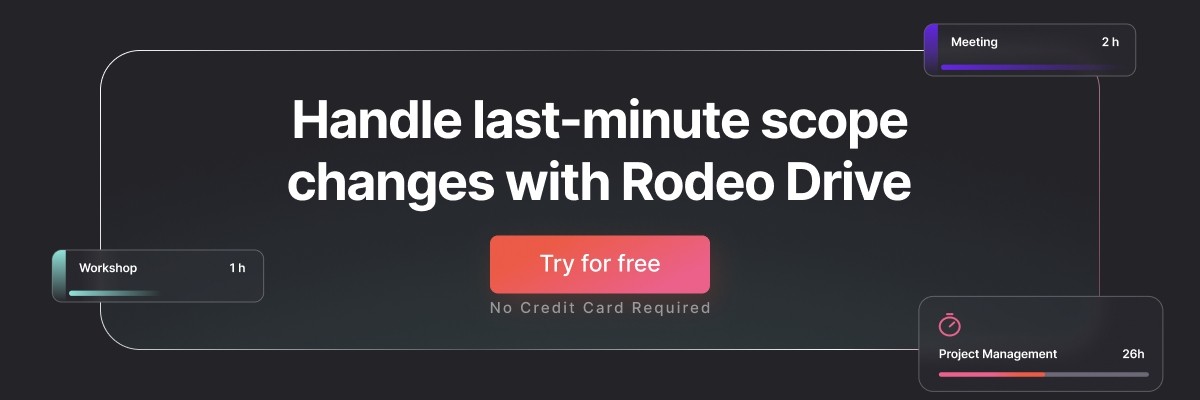How to Successfully Define Your Project Scope in 10 Steps
Project management consists of striking the right balance between projects that deliver impactful results without being overly ambitious. But how can you set your projects up to do just that?
The answer is with a great project scope. Defining your scope is an important step in any project planning process, as it helps project stakeholders and team members align on what a project is and isn’t.
In this blog, we’ll dive into the nitty gritty of project scope, along with its benefits, what to avoid, and some tips to help you out.
What is project scope?
Your project scope defines your project boundaries, including the goals, objectives, and deliverables included in the project.
According to the Project Management Body of Knowledge Guide, your project scope should explain the extent of what a project will produce along with the work needed to produce it.
When properly implemented, your project scope will help your team understand what falls within their purview and what items fall outside of the agreed-upon scope. This will allow your project team to focus their efforts on the appropriate action items.
Benefits of project scope management
So, why is project scope management important? On the surface, it might seem like a waste of time. But other than being a requirement for most projects, there are a lot of benefits to taking the time to define your scope that will pay off later on in the project:
- Manage stakeholder expectations: Because all parties need to sign off on the project scope before beginning the work, a clear project scope ensures everyone is on the same page. This can go a long way in preventing scope creep, which we’ll dive into later on.
- Mitigate risks: Considering the parameters of your scope makes it easier to identify inherent risks and prepare for them early on.
- Make budgeting and scheduling easier: By clearly defining the main focus areas of your project, you’ll be able to identify what specific areas need more resources or extra time allocated in the schedule.
- Improve change management: Scope management often comes with creating a change control process, improving your team’s ability to adapt to adjustments.
What is a project scope statement?
A project scope statement is written documentation of your project scope. Your scope statement can be included as a section of your project plan, or made into its own document for a more extensive overview.
We’ll get into the components required in a project scope statement below. But regardless of how it’s documented, the scope statement agreed upon by your project stakeholders becomes the scope baseline that you can compare future project requests to.
For instance, if a stakeholder asks your team to take on an additional project task, the baseline project scope statement will serve as a reference guideline that helps the project manager decide whether these changes are within the scope or if that request qualifies as a scope change.
This shouldn't be confused with a statement of work, which is more focused on defining all aspects of a project, helping clients and stakeholders understand what project outcomes to expect.
Also read: Prioritising Tasks When Everything is Urgent: 10 Effective Strategies to Use
What goes into your project scope statement?
The following sections provide a general foundation for what gets included in your scope statement. It’s by no means an exhaustive list, but it includes the basics.
That said, if you’re worried about things getting added to the scope after the project is underway, you can also add a section outlining what’s not included in the scope to avoid any gray areas.
Goals and project objectives
This is the main piece of your scope statement. Be clear about the key project objectives your team is working towards and any relevant high-level details regarding the timeline or team that will lead the project.
This section might sound something like: “This project will include social media, blog, and website content for the successful launch of a new product by Q4 2023. This project will be conducted by the marketing team.”
Related: Project Milestones: How to Successfully Set and Monitor Them
Project deliverables
What will your project look like when executed? Your project deliverables section might take on a list format highlighting the main outputs your team will produce. This includes reports, presentations, completed blog content — anything tangible that your team produces.

Assumptions and constraints
Just like how your project charter should briefly cover your project’s assumptions and constraints, your scope statement should as well.
Your assumptions are what your team assumes to be true during the project, and your constraints are the boundaries or risks that might interfere with project outcomes. In essence, your constraints should explain what can’t be done and why.
Pro tip: Start your projects off strong using our project charter template.
What is scope creep?
Scope creep occurs when stakeholders or other project sponsors expand the project requirements beyond what was agreed upon in the project scope statement. This often looks like adding new requirements, goals, or features to the project objectives.

How can project managers prevent scope creep?
You don’t want last-minute scope changes to jeopardize your team’s ability to complete the project on time. The best way to prevent this is by crafting a clear project scope statement that outlines what is and isn’t included within the project parameters.
But beyond that, there are a few other things project managers can do to proactively prevent scope creep:
#1 Involve all stakeholders in the project planning process
If you choose to only involve a few select stakeholders in the project scope statement approval process, your team may face scope creep requests later on from those left out of the project planning.
Involving all relevant parties in this process is the only way to ensure that everyone is on the same page and has the same expectations regarding the project direction.
#2 Practice risk management right from the beginning
Risks that pose a threat to the success of your project can force your plans to change in unforeseen ways. Identifying and monitoring these risks in the early stages of your project can help prevent them from snowballing into larger issues that cause scope creep.
#3 Promptly communicate setbacks with stakeholders
Project scope changes often arise when stakeholders feel that the project is not appropriately progressing and want changes made to generate faster results.
For this reason, it’s important to keep stakeholders informed of setbacks your team is facing and how you’re dealing with them so they can be confident that you will meet the project scope as outlined in your scope statement and there’s no need to make any late-stage scope changes.
Looking for ways to improve? Check out our project communication management guide.
5 tips to properly manage your project scope
Managing your project scope is no easy feat. Here are a handful of tips to help make the process a bit easier for your project team:
1. Set up a change control process
Change is inevitable during complex projects. The best way to guarantee that change doesn’t interfere with your project scope is through an established change control process.
The purpose of a change control process is to make sure that everyone is aware of proposed changes and that those changes have been reviewed and approved by the appropriate parties before being implemented.
You should build your change control process with the requests of both stakeholders and project team members in mind. The client or stakeholder might’ve identified changes on the business side of things, whereas the project team might’ve realized timelines were too ambitious, for example.
Perhaps the best way to set up this process is through a centralized form where people can submit proposed changes that are then reviewed by a pre-selected group that decides whether these changes are important enough to add to the project.
Related: A Complete Guide to Project Controls in 2023
2. Create a project scope management plan
While a project scope management plan may not always be necessary, it can certainly be helpful for complex projects or ones that may seem especially prone to scope creep.
The project scope management plan is another document created during the planning phase that outlines how the project scope will be defined, monitored, and updated as necessary.
As such, this sort of plan should include the project scope baseline, the acceptance criteria for project deliverables, team roles and responsibilities, and an overview of the project phases.
Your change control process should also be outlined as part of this plan so that there are clear guidelines on what to do once a change is approved.
3. Share the project scope statement with your team
While your team doesn’t typically have a lot of involvement in creating the initial project scope statement, it’s still important for them to be aware of what the project scope is — and what it isn’t.
Be sure to share the scope statement with them, as well as the scope management plan, so they have a better understanding of what falls under the umbrella of the project. This type of project documentation helps your team understand which changes need to go through the change control process.
4. Build a resource management plan
If your resources aren’t properly managed, it’ll be difficult to properly execute your project scope. This is where a resource management plan and capacity planning come into play.
There are two schools of thought on when you should create your resource plan — some believe this should occur prior to crafting your project scope so you have a complete understanding of the available resources, whereas others think it should come afterward.
It might be a bit easier to do so after your project scope is in place. This way, you’ll clearly understand how to allocate resources at every stage of the project.
And once you’ve developed a plan on the necessary resources, it’s easier to create a budget estimate or double-check that the estimate you’ve already created is accurate.
But while this might seem harmless on the surface, scope creep can have serious repercussions for your project’s health. This is because you’ll have to work these additional project requirements into your already written project plan, which can cause a strain on your available resources and schedules.

5. Refer back to your baseline scope when necessary
Recall that the purpose of a baseline scope is to compare it to your project at later stages in the project process. This way, you can easily identify whether your project has been impacted by scope creep by comparing it to the scope you started with.
If team members or other stakeholders have questions about the project scope, you should refer them to the scope statement as a reminder.
Keep an eye on your project scope with Rodeo Drive
Properly monitoring your project scope and preventing large-scale scope changes is a difficult task for project managers. A project management software tool can help alleviate some of this burden by helping project management teams centralize their project information and stay on top of project progress.
Rodeo Drive is an all-in-one project management software solution that can help teams do just that. The platform offers all of the features project managers need to manage their projects in a single app.
Let’s take a look at Rodeo Drive’s favored features that help project managers manage their project scope effectively:
Kickstart your resource management with detailed budgeting
Creating a detailed project budget is a crucial step in preventing overspending. Rodeo Drive makes budgeting easy by allowing users to create a phase-based budget so expenses are broken down into manageable chunks.

The best part is that your budget connects to your team’s tracked time, meaning it automatically updates in real time according to the amount of time your team has recorded toward project activities.
So, if a particular activity ends up taking twice as long as expected, that over-expenditure will be reflected in your budget, allowing you to immediately make the necessary adjustments to keep your budget on track.
Execute your project activities with your timeline-view planner
Projects include dozens — and sometimes even hundreds — of tasks and activities. Tracking these action items without the help of a project management tool can be a major headache.
This is why Rodeo Drive offers a timeline-view activity planner that allows you to assign your team work while simultaneously managing your team’s capacity.

The platform does this by showing you what everyone’s working on before you add a new activity. This way, you can be sure that you’re not overwhelming any one team member with too many tasks at one time.
Need to reschedule a task? Simply drag and drop the activity to a new team member or day.
Monitor your project metrics with helpful reporting insights
Just as your scope baseline can be a helpful resource for monitoring the evolution of your project, proper reporting can have the same impact.
Rodeo Drive compiles all of your team’s project data in the “Reports” tab, providing at-a-glance insights into your project spending, time registration, and employee productivity. You can also filter these reports by project status, date, or client.

Plus, if you need to export the data to create your own custom reports, you can do so via CSV or Excel file.
Additional features
- Estimating: Send budget estimates to your client for approval straight from Rodeo Drive. Plus, you can personalize these estimates with your own branding, terms and conditions, and notes.
- Invoicing: Bill clients directly from Rodeo Drive in the UK and via QuickBooks integration in the US to ensure that you’re getting paid for all of your hours worked.
- Client contact management: Avoid confusion by keeping your vendor and client contact information, rate cards, and points of contact organized in Rodeo Drive.
- Time tracking: Recording your hours is easy in Rodeo Drive. Start your live timer when you begin a project activity or add a timecard after the fact.
- Live chat support: Paid Rodeo Drive users always have access to premium live chat support from our team of experts.
Pricing
Rodeo Drive offers two pricing plans, each of which includes the following features:
- Free plan: Up to 10 users, 3 active projects, task management, and more
- Achiever plan ($14.99 per user/month): Everything in the free plan, plus unlimited active projects, unlimited storage, custom templates, free guest users, and more
Come experience Rodeo Drive for yourself — get started for free today. Want to learn more? Schedule a commitment-free demo with our sales team.








